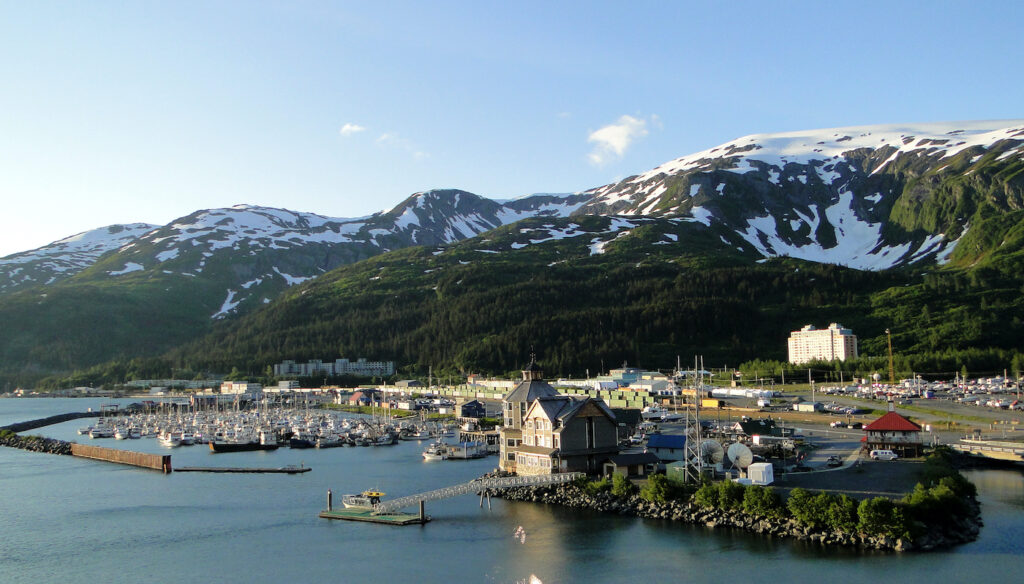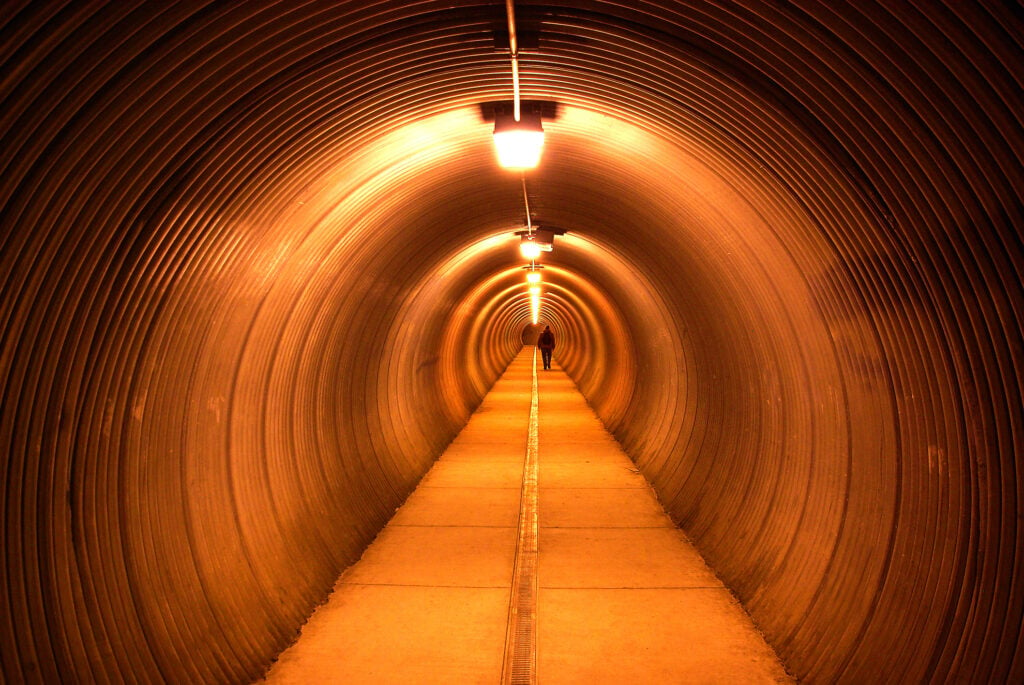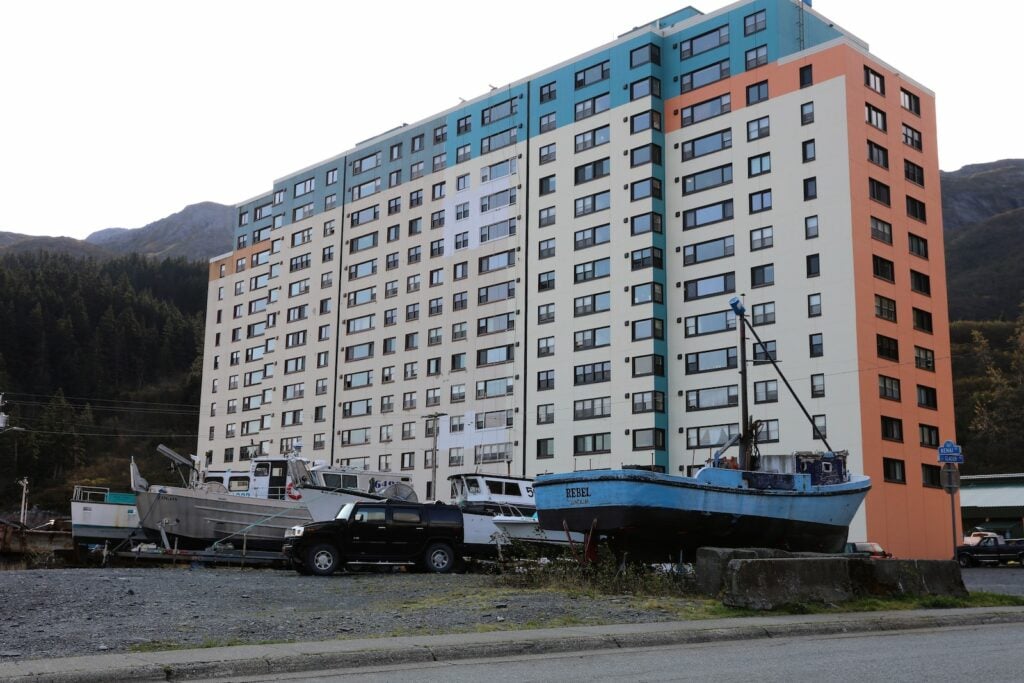Almost the entire population of the city of Whittier, Alaska, lives under one roof.
Called the Begich Towers Condominium, the building is home to the vast majority of Whittier’s residents, as well as shops, a police station and even a church. Residents hardly need to go outside. It’s convenient, because Whittier might just be the wettest city in the United States.

Whittier is the only settlement on a picturesque bay known as Passage Canal. The nearest city is Anchorage, 60 miles to the north. The main industries include fishing, recreation and tourism. You might imagine that this remote town, set against a backdrop of stunning natural beauty would consist of small houses, quaint cottages and rustic wood cabins. Not here. Only 270 people live in Whittier. And over 220 of them live in the same tower block.
Until the Second World War, the town of Whittier was even more sparsely populated. A United States military base was established in 1943, and it became a common port from which US troops entered Alaska. First called Camp Sullivant, it became a key location in the latter days of the Second World War, and then even more crucial during the early years of the Cold War largely due to its proximity to Russia.

Two huge apartment buildings were constructed to house the Army Corps and their families. The first was the Begich Towers Condominium. Locally referred to as BTI, it is a 14-story complex filled with two and three-bedroom apartments that remain inhabited to this day. The second building was the Buckner Building. It now sits abandoned, covered in asbestos, nobody ever willing to fork out the vast expense it would take to rid the building of its toxicity.
Read More: This is the world’s most remote post office
BTI effectively became the town’s only home and is now equipped with almost everything residents need. On the first floor is the post office and the police station. Kozy Korner is the name of the grocery store. There is a laundromat, a small market and a health clinic. Part of the top two floors is a bed and breakfast. In the basement of BTI, there is even a church.

It’s not just the resources within the tower, either. A series of underground tunnels dating back to the Cold War link BTI to some other of the town’s key buildings, like the local school and the town’s government. In Whittier, everything you need is only an elevator away.
A look at the weather might help explain why this self-sustaining indoor community came to be. The average annual temperature is a manageable 41 °F (5.1 °C), and even in the coldest month, January, the average is 28.2 °F (−2.1 °C). It’s not polar.

But Whittier’s wind, rain and snow make it a wholly different proposition. Six months of rain are followed by six months of snow. An annual average of 197.31 inches means Whitter sees more precipitation than any other city in the United States. It might be a tiny city, but it technically counts. Halo, Hawaii, is the next closest, and only uninhabited parts of the Hawaiian islands see more rainfall. On top of this, during the winter months, the winds coming off the bay and over the mountains regularly reach 80 mph.
It’s a difficult place to live and a difficult place to access. By land, the only way is via a tunnel. Officially, it’s called the Anton Anderson Memorial Tunnel (named after the chief engineer of the Alaska Railroad), but it is often referred to as the Whittier Tunnel. For a long time, it only accommodated trains, however at the turn of the millennium it was converted to make room for a highway as well.

Even then, cars can only cross the single-lane tunnel once an hour and cannot pass through it after 10:30 pm. If you miss the last entrance, you’re sleeping in your car.
If you were going home, at least it would mean a break from the neighbors…





